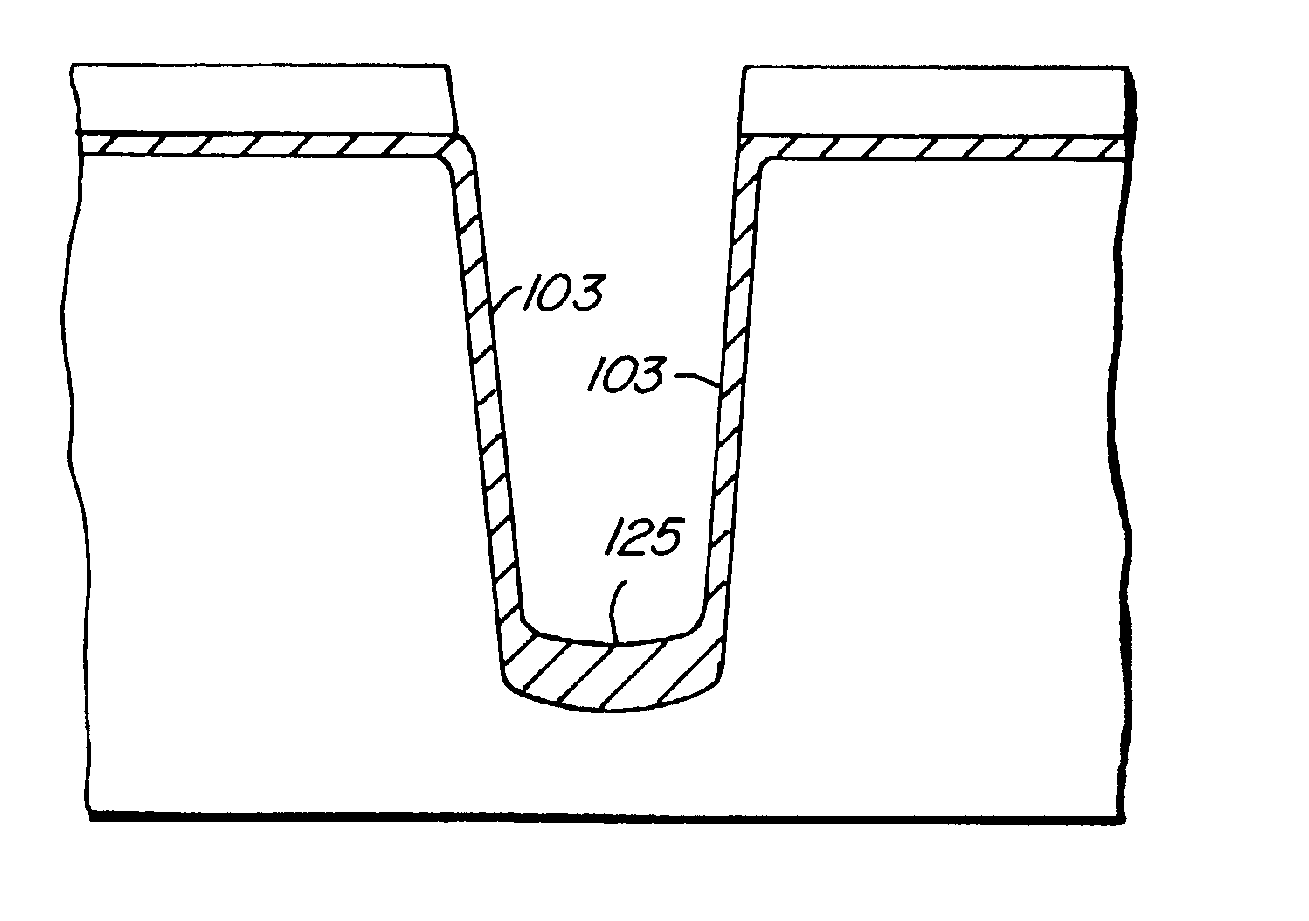Method for creating thick oxide on the bottom surface of a trench structure in silicon
a trench structure and silicon technology, applied in the field of trench transistors, can solve problems such as low efficiency
- Summary
- Abstract
- Description
- Claims
- Application Information
AI Technical Summary
Benefits of technology
Problems solved by technology
Method used
Image
Examples
Embodiment Construction
FIG. 2 illustrates an exemplary n-type trench transistor with a superior gate isolation structure according to an embodiment of the present invention. A trench 10 with sidewalls 11 and a bottom 17 extends into a silicon substrate body region 22. The source electrode is shown in FIG. 2 as being two N-type regions 14 adjacent to and on opposite sides of the trench 10. The drain electrode is shown as an N-type region 16 below a P-type body region 22. It is to be understood that in the case of a p-type transistor, the conductivity type of each of the drain, source and body regions may be reversed. A conductive material forms the gate 15 of the trench transistor. The gate 15 may extend above, below, or at the level of the top surface of the silicon substrate body region 22. In operation, drain region 16 may be electrically contacted through the substrate of the device, the gate 15 may be electrically contacted via a conductive layer (e.g., aluminum) above the transistor (not shown), and ...
PUM
 Login to View More
Login to View More Abstract
Description
Claims
Application Information
 Login to View More
Login to View More - R&D
- Intellectual Property
- Life Sciences
- Materials
- Tech Scout
- Unparalleled Data Quality
- Higher Quality Content
- 60% Fewer Hallucinations
Browse by: Latest US Patents, China's latest patents, Technical Efficacy Thesaurus, Application Domain, Technology Topic, Popular Technical Reports.
© 2025 PatSnap. All rights reserved.Legal|Privacy policy|Modern Slavery Act Transparency Statement|Sitemap|About US| Contact US: help@patsnap.com



